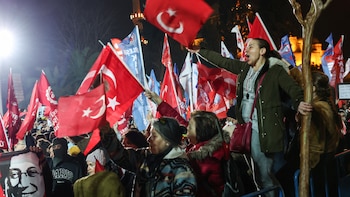
This roller coaster came to be considered the largest and fastest in the world in the 1960s and 70s. The structure was mostly built of wood and iron. With machinery such as saws and cranes, men are dedicated to removing the iconic roller coaster.
The structure was built in 1964, by the American company International Amusement Devices, Inc. The designer was Aurel Vaszin and Edward Leis. It is estimated that there are only about 20 such roller coasters worldwide.
The process of its construction lasted approximately nine months, and everything needed for construction, which was the foundation and timber, were brought from the United States. The terrain on which the roller coaster was installed was not completely flat, so it had to be leveled.

In place of the Chapultepec Fair, a new amusement park, called Aztlán, will be built.
The dismantling of the iconic roller coaster will surely bring a lot of nostalgia to the people who put themselves to enjoy riding on it. And it is that this type of attractions cannot be missing in amusement parks, since it is one of the most requested games.
Proof of this is that in the first amusement park that existed in Mexico City, it was also where the first mountain existed. Russian of the country. This amusement park was called La Luna, and was created to amuse the upper class of Mexico, during the time of the Porfiriato.
The amusement park came up with businessmen of the Porfirian era, around 1906, when they saw that the Orrin Circus was a great success, and so they discovered that entertaining the Mexican upper class was synonymous with having a successful and juicy business.

The La Luna amusement park was located where the whereabouts of Chapultepec and the Stela de Luz are now located. The project amazed the wealthy of the time by bringing to Mexico some of the attractions that could only be seen in the United States, such as the country's first roller coaster or acrobatic shows, such as that of Babcock, a cyclist who jumped into the void gaining momentum from a slide.
Another attraction it had was the “laughter factory”, the bowling alley, the scenic river, electric photography service, Japanese billiards, as well as a musical band that enlivened the visitors' stay, which was led by the musician from Zacatecan Candelario Rivas.
The people of the upper class, mostly residents of the Juárez neighborhood, saw in Parque Luna the ideal place to go to find a partner of the same social class. The park also had a “skate lounge”, equipped with 1,500 pairs of skates, refreshments and refreshments, 16 employees, special music, and instructors to prevent women from falling into embarrassing positions as much as possible.
Around that time, skates in Mexico began to become popular and fashionable, so La Luna took advantage and held the first skate competition in Mexico on May 3, 1907, at which event the winner was given a gold medal, who turned out to be a man named M. García.

There were also other competitions, now on the occasion of the independence of the United States, attended by the US Ambassador and President Porfirio Díaz, who saw Mexicans and Americans compete in races, dances and confetti battles.
In total, there were 32 fixed attractions and as many other itinerants. However, the park fell apart when the Revolution began and the subsequent migration of wealthy families abroad caused La Luna to close its doors a few years later. After its closure, the property was divided to open the street of Liège and extend Bordeaux and Hamburg.
KEEP READING:
Últimas Noticias
Debanhi Escobar: they secured the motel where she was found lifeless in a cistern
Members of the Specialized Prosecutor's Office in Nuevo León secured the Nueva Castilla Motel as part of the investigations into the case

The oldest person in the world died at the age of 119
Kane Tanaka lived in Japan. She was born six months earlier than George Orwell, the same year that the Wright brothers first flew, and Marie Curie became the first woman to win a Nobel Prize

Macabre find in CDMX: they left a body bagged and tied in a taxi
The body was left in the back seats of the car. It was covered with black bags and tied with industrial tape
The eagles of America will face Manchester City in a duel of legends. Here are the details
The top Mexican football champion will play a match with Pep Guardiola's squad in the Lone Star Cup

Why is it good to bring dogs out to know the world when they are puppies
A so-called protection against the spread of diseases threatens the integral development of dogs




